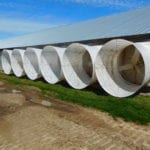
Discharge Cone Covers Increase House Tightness
The University of Georgia recently conducted research to study how excess leakage in a small area – like along the end wall fans – can impact litter quality, fuel usage, and ultimately bird welfare. Drafts are abundant near the fans on the side or end wall. Birds tend to get sick in these areas and […]
Read More >
California Proposition 12 Affects US Cage-free Egg Industry
In 2018, California voters approved Prop 12 – The Farm Animal Confinement Initiative. The proposition requires laying hens, nursing sows, and veal calves be housed in confinement systems that comply with specific standards for freedom of movement, cage-free design, and minimum floor space. The law reaches outside of California by prohibiting any business from knowingly […]
Read More >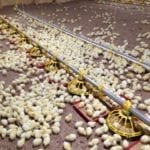
Minimum Ventilation in Winter Brooding
Minimum Ventilation in Winter Brooding As the weather cools heading into winter, gas prices often rise. It is important to balance heating your barn and maintaining adequate air flow and air quality using minimum ventilation. Ventilation is crucial to providing the ideal environmental conditions for broilers to thrive. In winter months in particular, if you […]
Read More >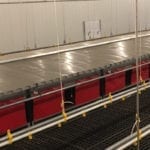
Keeping Eggs Clean in the Breeder House
The health and well being of broiler birds is contingent on the cleanliness of eggs laid in the breeder house. Optimal eggs are laid in the nest, where they are kept clean from debris and safely transported from the nest to the storage room. Floor eggs are bound to happen, but too many floor eggs […]
Read More >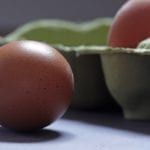
21 Fun Egg Facts for World Egg Day 2021
21 Egg Facts for World Egg Day 2021 1. Eggs are good for your eyes. They contain lutein which prevents cataracts and muscle degeneration. 2. An egg shell can have as many as 17,000 pores. 3. Egg shell and yolk color can vary but have no effect on taste or quality. 4. Breed determines egg […]
Read More >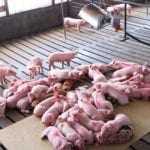
Preventing E.coli Repercussions in Swine Rearing
Preventing E. coli Repercussions in Swine Rearing Escherichia coli can cause serious disease and has frequently been a thorn in the side of the swine industry for many decades. E. coli is not as common in swine as it is in other meat producing industries (such as cattle), but still has a lasting effect on […]
Read More >
Safeguard Live Animal Traps are made of Galfan™ wire which has three time the corrosion resistance of standard galvanized wire. These traps last longer, even in harsh conditions. Professional grade catch and release models have a heavy duty bait tray with travel stops. This keeps the bait secure and prevents damage to the cage by […]
Read More >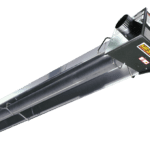
How to Prepare Heaters for Winter
Whether you use brooders or tube heaters, they both need regular maintenance to keep them working flawlessly. Be sure to always unplug and disconnect the power supply and fuel supply, and never work on a hot heater. Be safe this winter. Take care of your heaters. Subscribe to our blog!
Read More >
Research Suggests Broiler Breeders Prefer Wooden Nests
Recent research into nesting behavior has shown that nest type influences egg laying location. If nests are uncomfortable or space is inadequate, birds will resort to floor laying. This presents challenges to producers and processors that are in need of clean, damage free eggs. The research has shown that the opposite is equally true – […]
Read More >
Nesting Options for Happy Hens
There are several options when it comes to choosing what nesting option is best for your farm. Hens prefer nests that are dark, secluded, warm and comfortable. It is important to create optimum environment for nesting to reduce the risk of floor eggs. Eggs laid outside of the nests are more likely to be contaminated […]
Read More >Grower Spotlight – Brian Hamilton
Brian Hamilton began farming at just six years old. His grandparents raised beef cattle and poultry, and he helped by bottle feeding calves and cleaning chicken drinkers. The love of farming as deeply ingrained. After high school, he accepted a contract to raise hogs and eventually branched into poultry in 2014. Starting small, he bought […]
Read More >
Mitigation Key to Sustainability in Poultry Farming
Farmers are often in the spotlight as a target for sustainability practices, and indeed good farming practices across the agriculture industry are needed to ensure a balance between food production and environmental stability. Identifying the best mitigation practices can be challenging, but it certainly requires a holistic approach. These practices could be used across the […]
Read More >
Animal Mortality Disposal Options
Animal mortality disposal options Animal mortality losses are a normal part of poultry and livestock production. Mortality can occur due to disease, accidents, inter-animal competition or natural disasters such as flooding. It is crucial to have a mortality management plan in place before a death occurs. Disposal should take place as soon as possible in […]
Read More >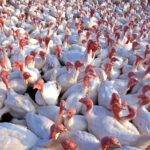
Discovering light’s effect on turkey hens
There’s been abundant research on how lighting effects chicken reproductivity and behavior, but not much is known about how lighting effects turkey hen reproduction. A research project at Pennsylvania State University will use advanced imaging technology to pinpoint the brain areas responsible for regulating the seasonal cycle in turkey hen reproduction. “What we’re trying to […]
Read More >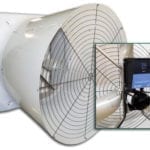
Variable speed fans have been on the market for many years, but only recently have they become a flexible choice for poultry barns. We lay out some of their uses in this webinar, check it out! Subscribe to our blog!
Read More >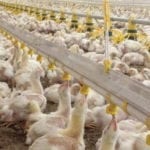
HOW TO CONTROL AMMONIA IN POULTY BARNS
HOW TO CONTROL AMMONIA IN POULTY BARNS One of the biggest complaints at a poultry barn is ammonia in the bird area. The ammonia in a poultry barns not only smells, but can also have harmful effects for both the birds in the barn and the workers who take care of the birds. Understanding how […]
Read More >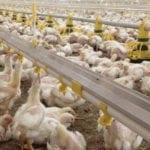
Infographic: Water Usage Vs. Water Consumption
Coming into spring and warmer weather, you should expect to see an uptick in water usage. Water is necessary for both the birds and the environmental regulation in the house, so it is important that growers are ready with adequate water supply and water quality. While water consumption is arguably the most important factor in […]
Read More >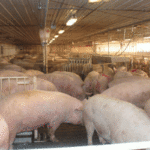
NON-NEGOTIABLE POINTS FOR HEALTHY PIGLETS
NON-NEGOTIABLE POINTS FOR HEALTHY PIGLETS Several factors influence piglets’ health during lactation, making this a challenging phase. The present article will discuss the main points related to their development, presenting some non-negotiable actions that should be practice in routine. Colostrum and milk yield. Sows’ capacity to produce colostrum and milk and is related to genetic […]
Read More >